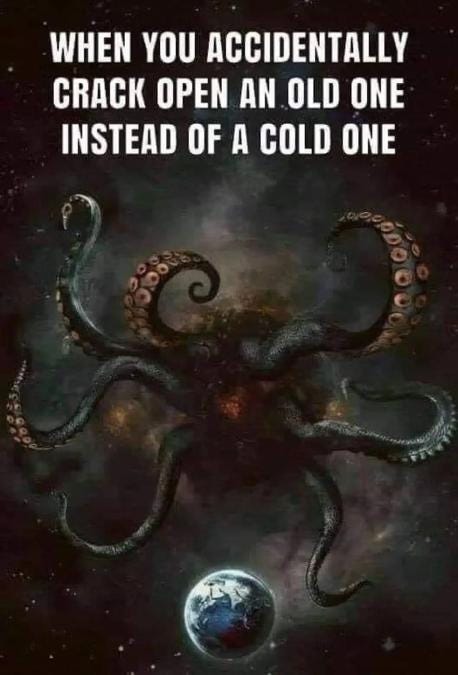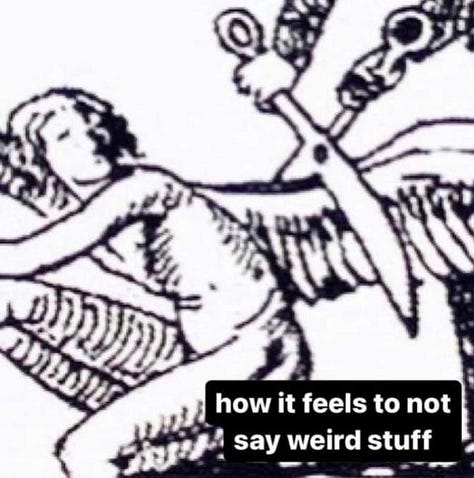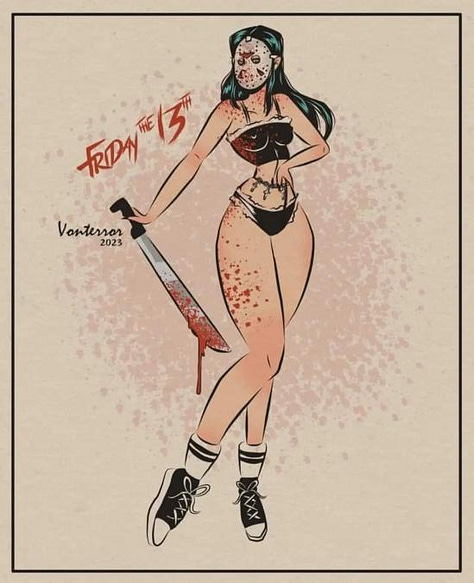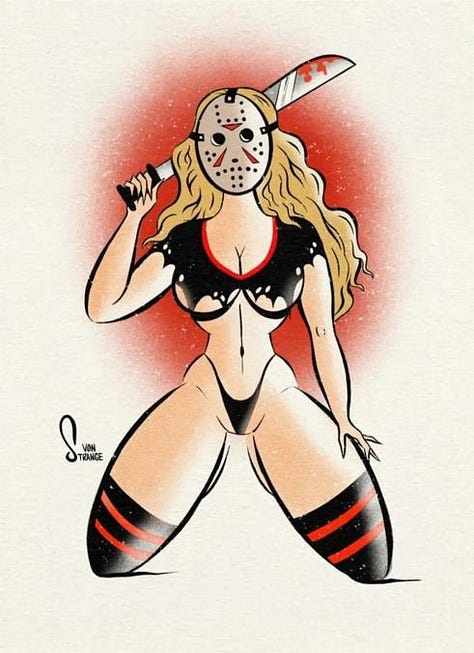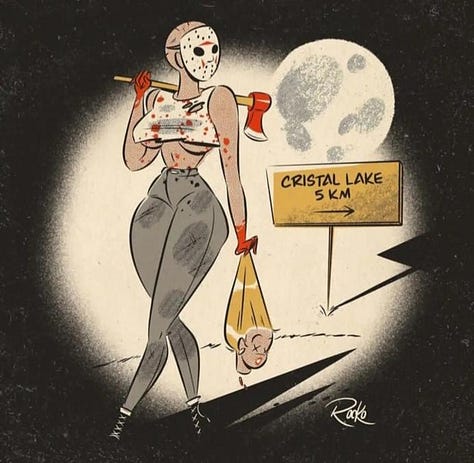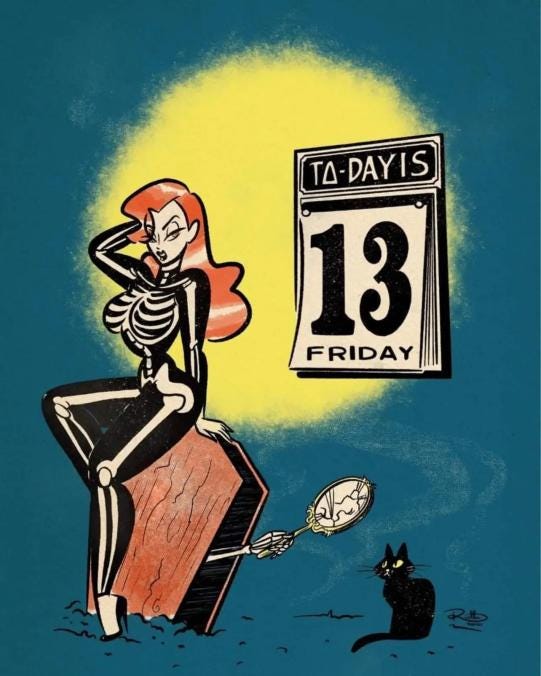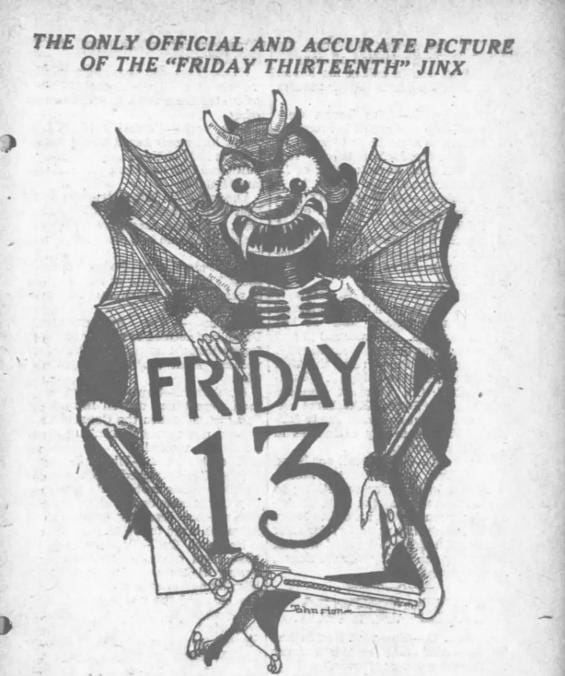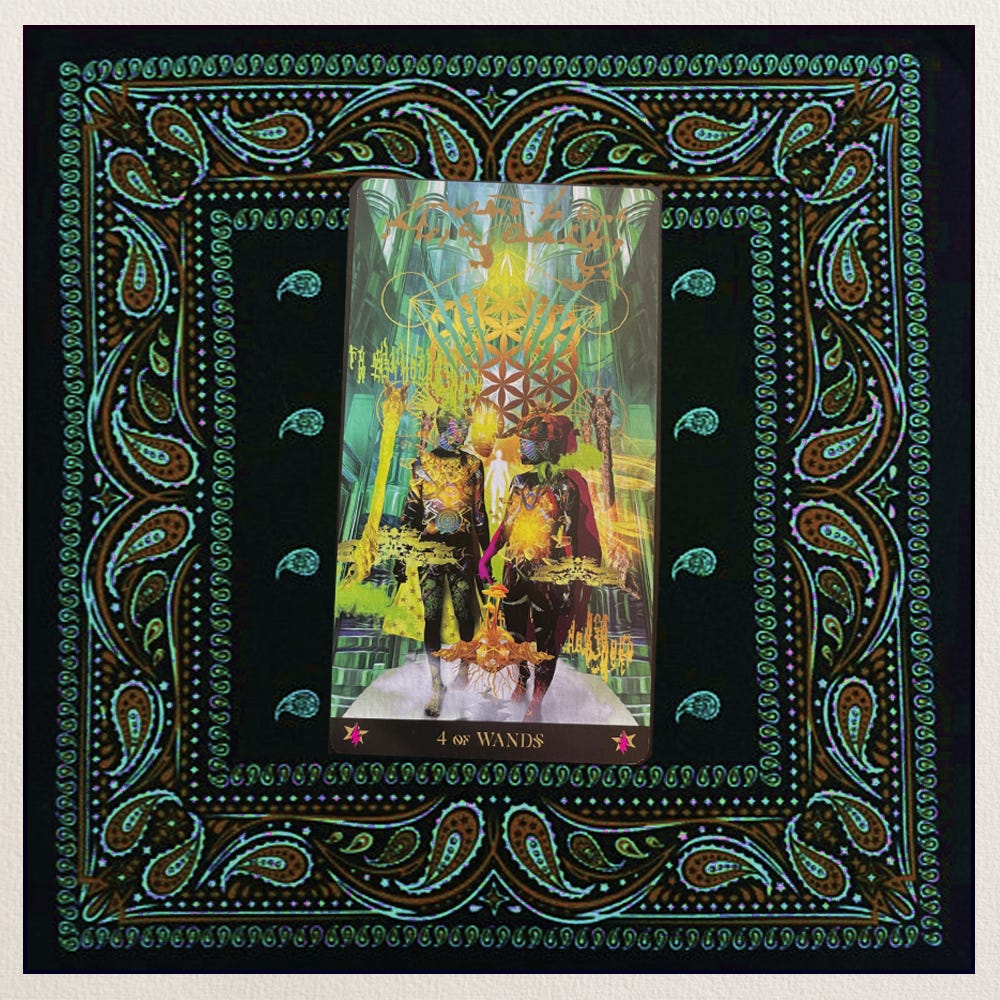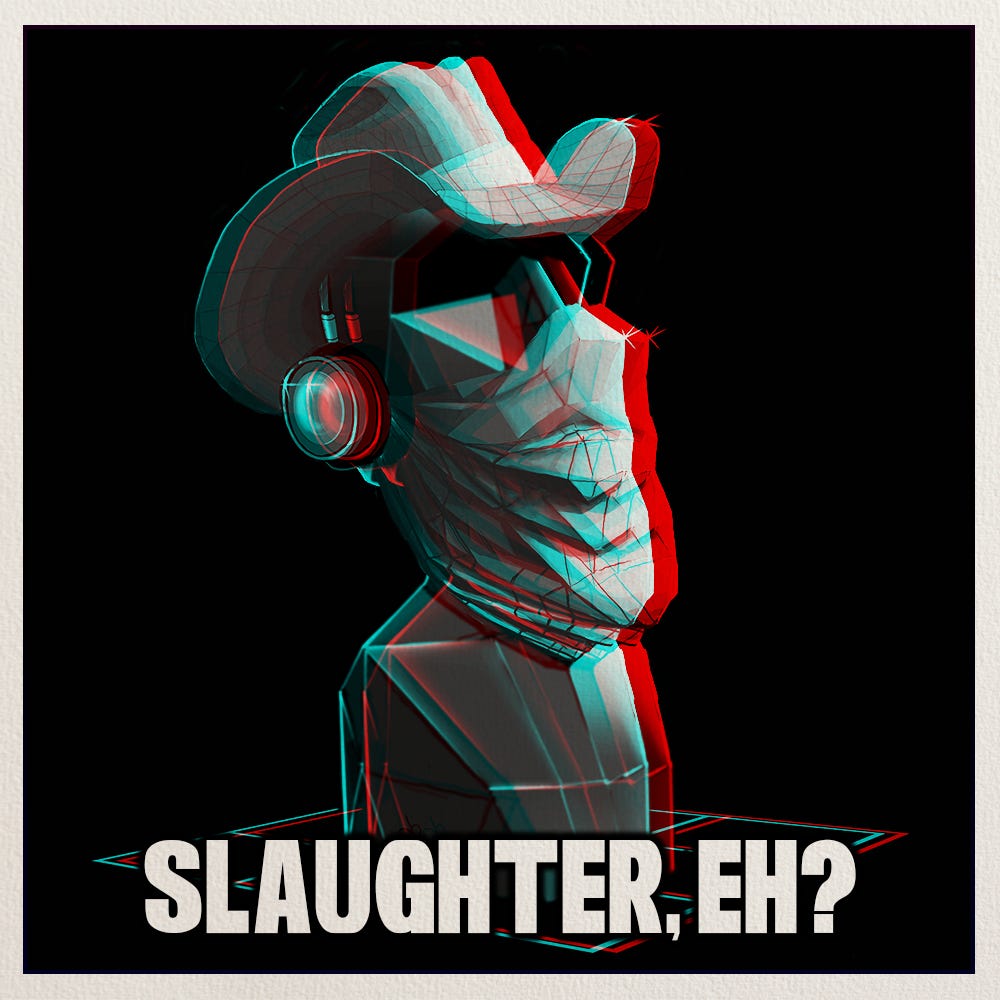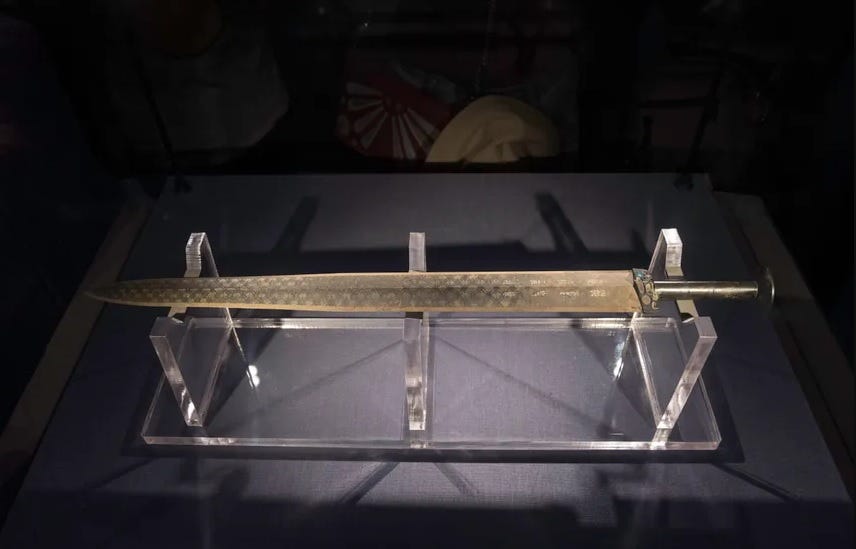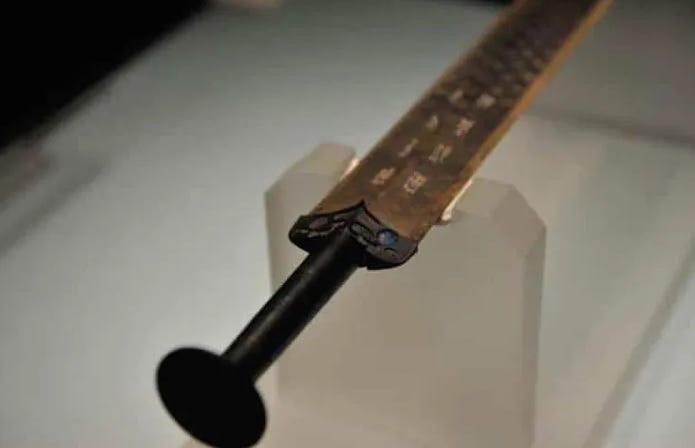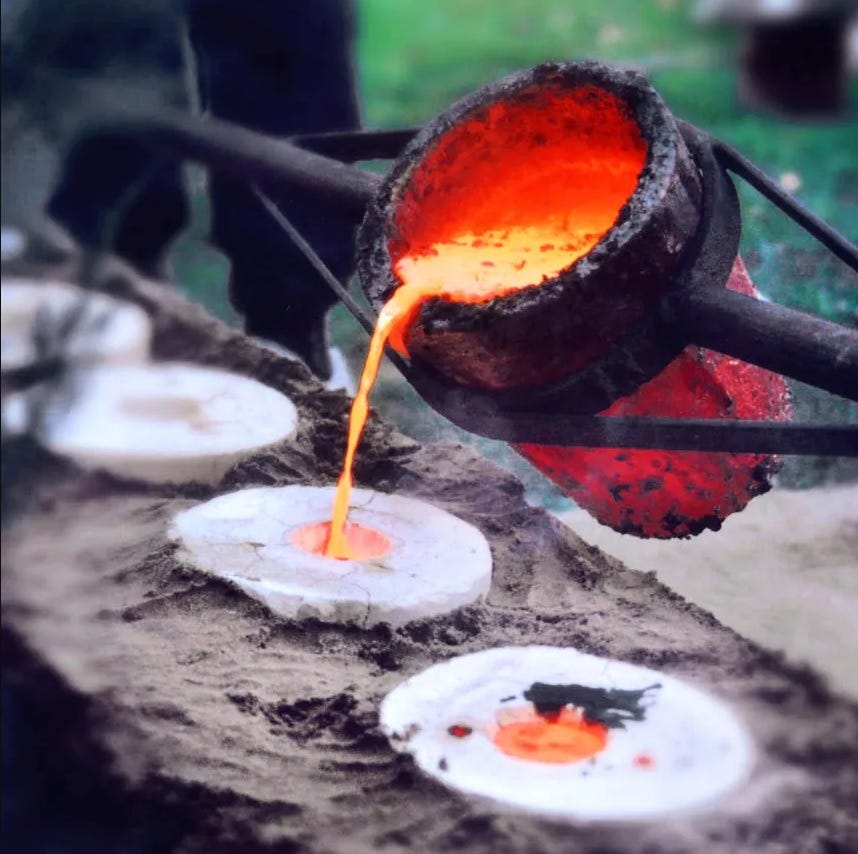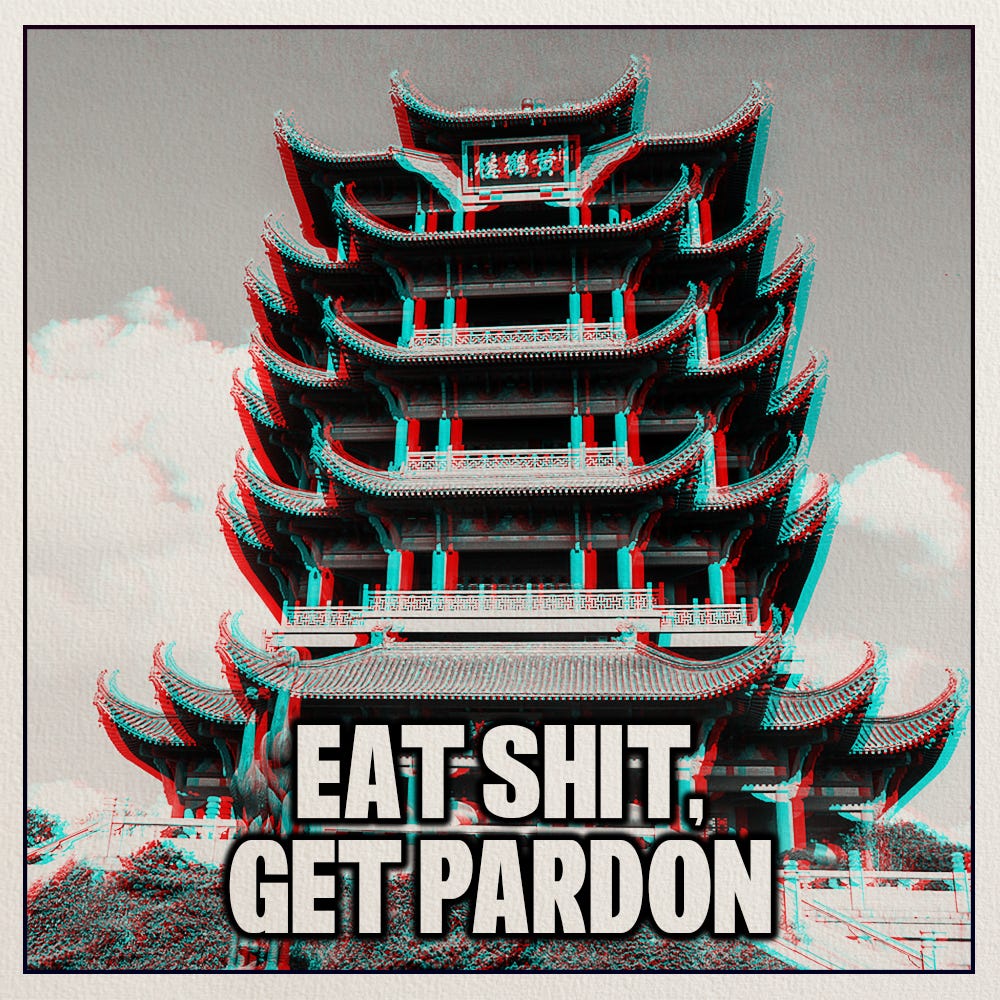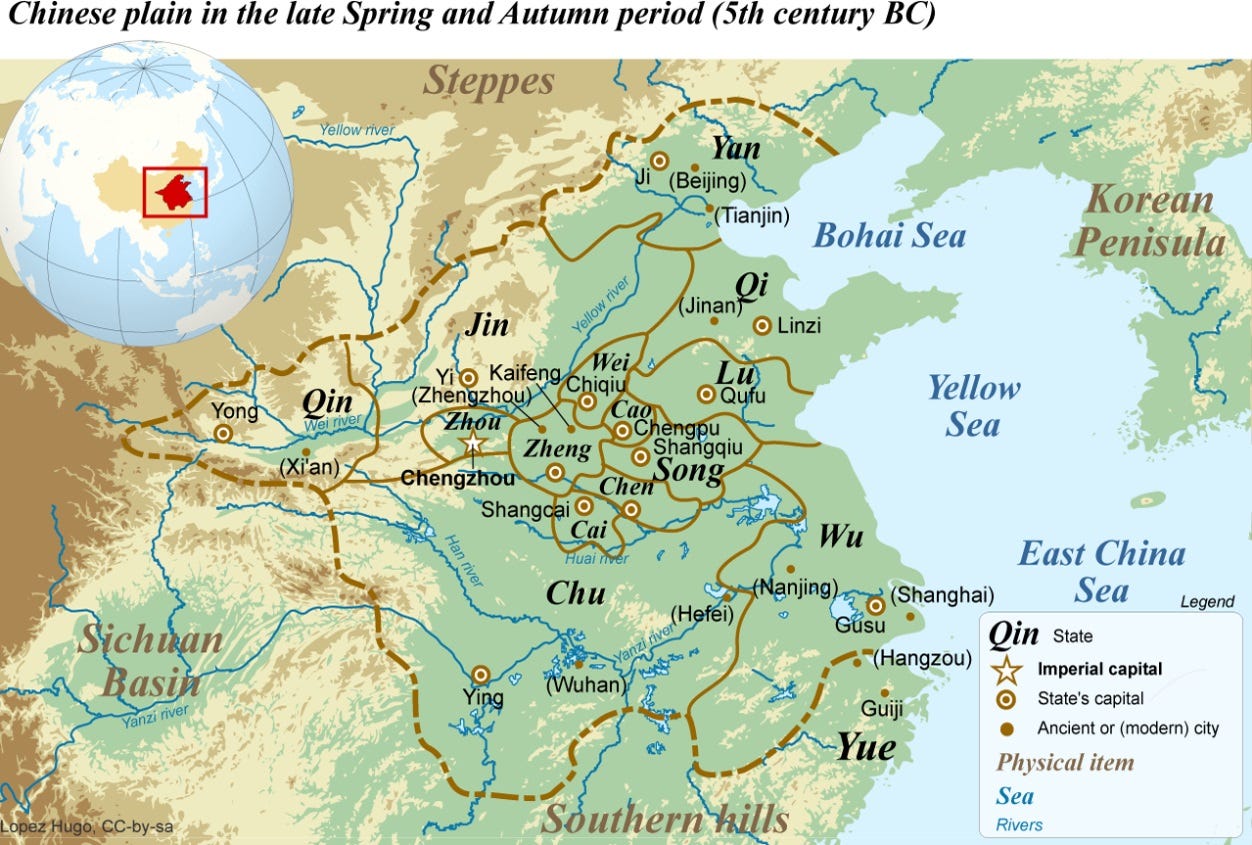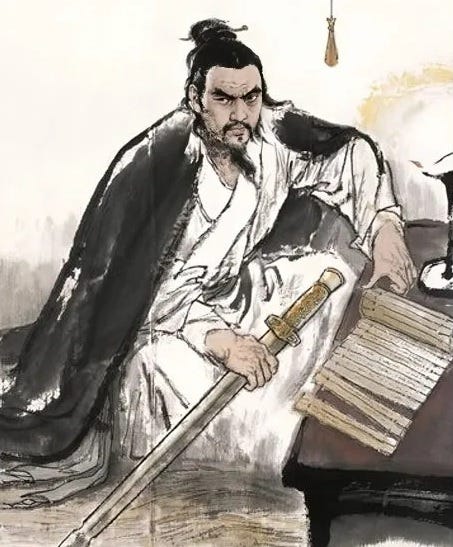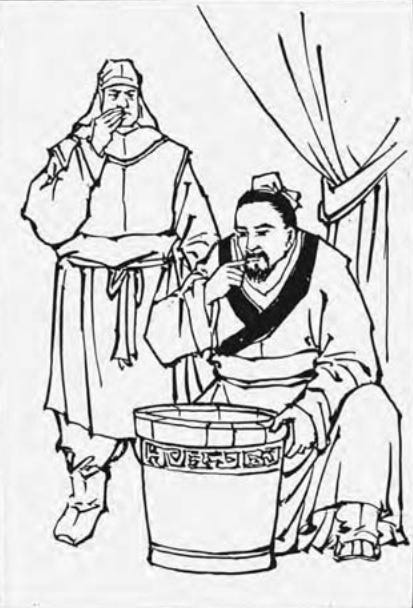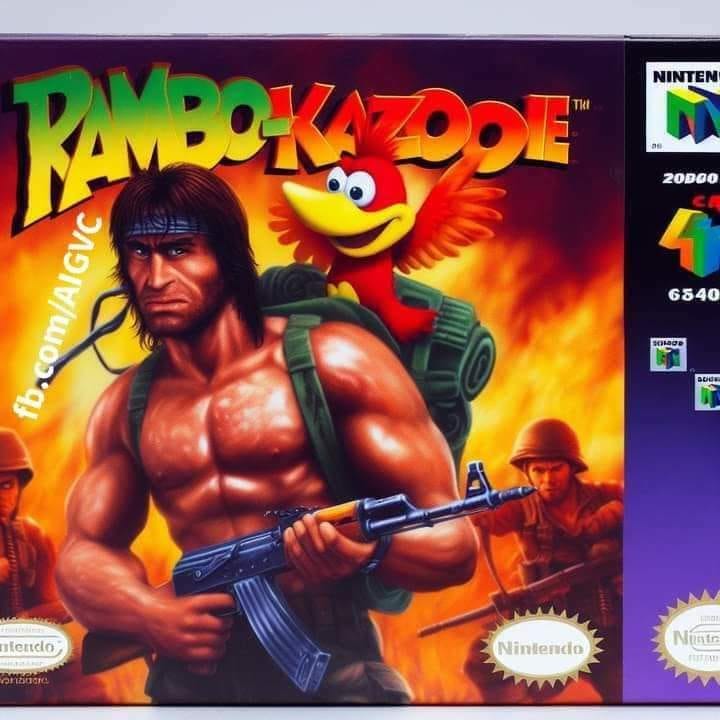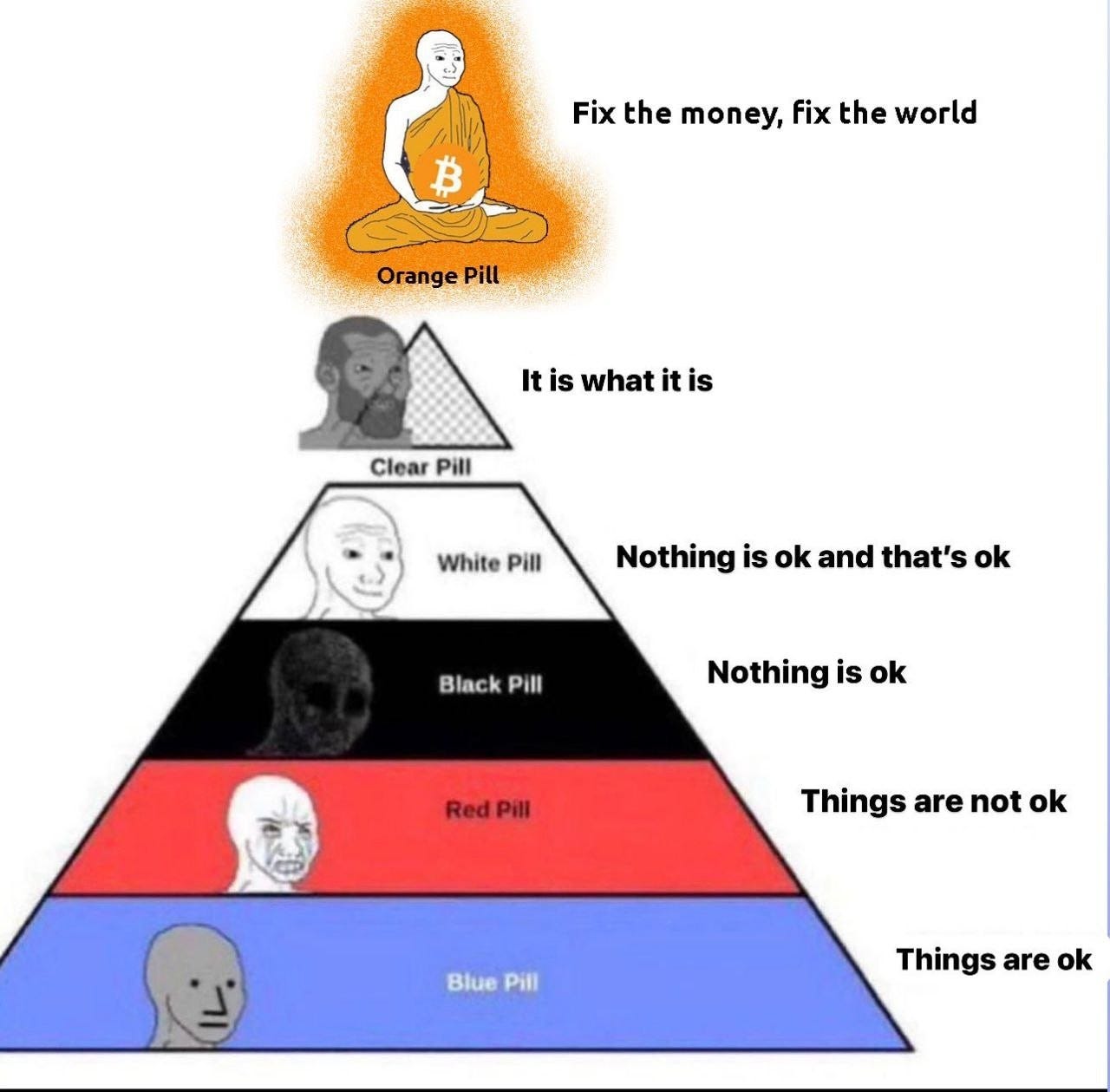S01E174: You Mean Her Majesty's Army?
Tonight’s Tarot: 4 of Wands
Freaks of Hazard:
CBrooklyn112 came in with his monthly donation for $6 thru the paypal!
Mr. Edd also hit us with a $10 donation, and the opener/intermission clips!! He also had a note:
I decided to take this 10 dollars out of my baby's mouth and give them to your cause, because, as my father never said to me, I believe in you!
I heard in the MMO that Lavish is "a Spanish dude" is this true?
Can we hear the ISO "I'm sorry I'm a little retarded" ? I love it since it's my second punchline every time one of my jokes doesn't land well at work. I work for the University of California and, boy those people really are fond of getting offended. I am Mexican and I make jokes about my gardening superpowers because of my Mexicaness and they get offended with me in my own regard. Some wired shit like that. Anyway, sorry for the super long note.
Love to the show, to your crowd and to you gentlemen.
Piece and respect.
Mr. Edd.
Thank you both kindly o7
A big thanks to Thew the Kooky for suggesting the sword of Goujian topic! Jah bless!
Subscribe for the SXXY-est junkmail for your inbox right here!
SLAUGHTER, EH?
GRAHAM DUNLOP joins us
https://grimerica.ca
https://grimericaoutlawed.ca
https://adultbrain.ca audiobooks
https://contactatthecabin.com events and trips
https://twitter.com/grimericaoutlaw
LAYERS OF BRONZE
SWORDS OF YESTERDAY
Archaeologists Discover A Preserved 2,400 Year Old Weapon
How Did the Ancient Romans Make Concrete So Much Better Than Ours?
3000 Years Old Xiphos (Bronze Cast) - Making swords from molds
Humans have been around for a long time. Given the general slowness of evolution in large animals, scientists of this age determine that humans of our capability and intelligence have been around for at least 200,000 years. The current archeological narrative tells us these human beings did not discover basic smithing and metallurgy until 4,000 BCE, which gives mankind only the most recent 6,000 years in 200,000 to enjoy the utility and luxury of alloys.
It is difficult to tell whether civilizations existed and developed beyond that point far back in time, because it is nearly impossible for anything to exist that long. Structures built of any material will crumble away eventually. Very few things we possess today can claim to be as old as 6,000 years. Pottery, carvings, trinkets, ancient words and pictures inscribed on old pyramids, temples, and caves.
When something does last centuries in good condition, we revere it as sublime. Some famous examples include Roman concrete. Lesser known items come from around the world, including in faraway China with its deep ties to a rich and ancient past.
One of these is the Sword of Goujian.
Sword 1 - The Discovery
Sword 2 - The Period
We know of this period, and it gets its name from a document attributed to Confucius. The Spring and Autumn Annals are one of the core Chinese classics.
Sword 3 - The Preservation
When the 2,500 year-old sword was found, it was sharp enough to slice through a finger of an archeologist testing the edge, and then through 20 sheets of thick paper with no problem. It is insanely sharp given that my kitchen knife dulls immediately after use.
The sword has a total length of 22 inches (55.6 centimeters), with a 3.3-inch (8.4-centimeter) hilt. The exquisitely forged blade was made primarily of copper, but the edges have a higher tin content, making them harder and able to keep a sharper edge. Both sides of the blade are decorated with a repeating rhombi pattern, their dark lines standing out from the sword’s overall golden hue. The guard, meanwhile, is inlaid with blue crystals and turquoise.
On one side of the blade are eight characters engraved in what is known as bird-worm seal script. Six of these ancient characters have been deciphered. The script reads: “King of Yue” and “made this sword for [his] personal use.”
The sword, being made of copper and tin, was likely forged by a bronze cast method. Bronze casting is the process of pouring molten bronze into a hollow mold, typically of clay or sand. It is said that the sword’s core was poured with a higher copper ratio to make it softer and more flexible, then the edge metal with a higher tin ratio was poured over that to make a harder edge. The handle also was created from a molten pour, making the whole sword one single piece of metal with varying compositions in the bronze.
Over thousand of years, the sword has not rusted. It is noted that bronze does not rust the same way as iron and steel. The term “Rust” specifically means the oxidation of iron with a catalyst of moisture. Bronze is greatly spared from this. However, it can suffer discolorations and degradation. However, this ancient sword was found in mint condition without these blemishes, in large part thanks to its chemical coating.
The sword is coated in Chromium Sulfate, a complicated inorganic compound, one which modern man wasn’t able to recreate until the industrial revolution. It is used primarily in tanning.
Sword 4 - The Metallurgy
Sword 5 - Goujian
Sword 6 - Never Forget Yue
EAT SHIT, GET PARDON
The setting for the Goujian story was the rivalry beginning in the latter phase of the Spring and Autumn period (722–481 BC between the neighboring states of Wu (in modern Jiangsu) and Yue (in modern Zhejiang), two newly ascendant powers on the southeastern periphery of the contemporary Chinese world.
In 496 BC the king of Wu, Helu (alt. Helü), took advantage of the opportunity created by Yue’s preoccupation with funerary observances for its recently deceased king to mount an attack. The new Yue ruler, Goujian, at the time only in his early twenties, counterattacked and employed exceptionally brutal tactics to defeat the forces of Wu. In an example of this brutality, he sent three waves of convicted criminals toward the Wu front lines, where with a great shout they proceeded to cut their own throats. While the Wu forces stood stupefied, the Yue army launched a surprise attack from another direction, defeating Wu and mortally wounding Helu himself.
Before King Helu died, he summoned his son and successor Fuchai (alt. Fucha) and asked him to never forget that Goujian had killed his father. Remember Yue! Fuchai worked hard to rebuild an army, and went to war once more against Yue and King Goujian.
Goujian, facing certain defeat at the hands of Fuchai, was fully prepared, we are told, to fight to the finish, but his high official remonstrated with him, arguing the case for a less suicidal course. In the interest of saving Yue from extinction, they contended, and in the 5th year of his reign Goujian and his wife became slaves of their enemies. They lived as peasants and performed slave work for 3 years, and the honorable enemy King Fuchai took note of their honest labor. Fuchai fell into a serious illness from which he suffered for a long time, and declared that he would pardon Goujian as soon as he felt healthy again.
At this news, Goujian arranged a meeting with Fuchai. As Goujian walked in, a slave was taking out to clean Fuchai’s freshly used chamber pot. Goujian stopped the slave, stuck his finger in Fuchai’s shit, tasted it, and declared to Fuchai that he would not die. Goujian explained that he had formerly studied with an expert who made prognoses on the basis of the smell and taste of fecal matter and had learned about the correspondence between the taste of stool and the taste of cereal grain. When the taste of a person’s stool was not in harmony with the seasonal taste of grain, the person was certain to die, but when the two were in harmony the person would live.
Fuchai was so happy with the news, he pardoned Goujian on the spot and told him he could leave his stone cottage and move into the palace, but he was still to tend to the horses and carry on with his other duties as before. Soon Goujian and his family were released, and the Kingdom of Yue made into a vassal state.
After resuming his rule over Yue, Goujian, a different man from the headstrong, self-indulgent youth of only a few years before, governed in a respectful and circumspect manner, practicing strict economy and avoiding extravagance. The now-disciplined King knew his vengeance could not be accomplished overnight, and so he worked quietly, incessantly from the shadows. He never forgot his humiliation as a slave. The Chinese proverb woxin changdan (“to sleep on sticks and taste gall”) became closely associated with the Goujian story, as we are told that Goujian hung a gallbladder in his room, licking it every time he went in or out in order to guard against complacency and to remind himself of the bitter suffering he had undergone.
A few years later, Goujian offered the best seeds from his crop to Fuchai as a tribute, but had the seeds boiled and sterilized in secret. Fuchai’s crop failed, and his nation suffered a famine. Goujian finally saw his opportunity, invaded Wu, and after a 3-year long war defeated Fuchai and became overlord of Southern China.
The skill of the sword’s construction, the precise compositions of the alloys, and the chemical coating of chromium sulfate all insinuate a sophisticated series of sciences, metallurgical and chemical, developed by 500 BC.
The Sword of Goujian
The Time
Discovered in 1965 in Hubei, China
Dated to roughly 500 BC (496 – 465 BC)
The Place
Hubei Province (34 provinces in all)
Capital of Hubei important in current affairs
The Man
Goujian - King of Yue, petty kingdom of Southeast China
Fought the Kingdom of Wu
The Sword
Coated in Chromium Sulfate
ROMAN CONCRETE
There are some similarities between the sword and the famous example of Roman Concrete.
Concrete 1 - Intro
Concrete was developed by the Ancient Romans 2-3 centuries before Christ. This concrete was developed with glassy volcanic ash, and had a weaker structure than modern concrete. However, the concrete was more resilient, and could be built in wet areas and even underwater.

Concrete 2 - Stronger in Water
Concrete 3 - The Dome Layers
The most famous example of Roman concrete is the Pantheon of Rome. The 2,000 year-old building is the largest unreinforced concrete structure in the world. Particularly impressive is the massive dome built almost entirely out of concrete. Modern concrete crumbles and collapse on itself, but this dome still stands proudly today. The dome, like the Sword of Goujian, was also built in layers of a material of different compositions. The bottom layers are heavier, the top layers are lighter.
The trick to longevity?
Practical layering, waterproofing, and alchemy!
THE MANAGEMENT
CARTOONS OF TOMORROW
The House of Tomorrow (1949 film)
⭐ Tex Avery’s World of Tomorrow
World of Tomorrow 1 Completely Prefabricated - See prefabricated houses appear before your very eyes!
World of Tomorrow 2 Too Rich An Appearance - Hide your wealth!
World of Tomorrow 3 A Screen For Each Member - Perfect tans, perfect chairs, perfect everything!
World of Tomorrow 4 Mystery of The Light - How does the light work??
World of Tomorrow 5 Junk In The Trunk - THICC TRUNK YO
World of Tomorrow 6 Overnight It Happened - Watch as TV's take over everything!!
World of Tomorrow 7 One Simple Knob - The TV is where the whole family will gather!
World of Tomorrow 8 Long Commercials - I'm sold on this one for sure with the anti-commercial mechanics
World of Tomorrow 9 For You Business Men - There's TV's for all sorts of people, like peeping toms!
World of Tomorrow 10 The Chicken Centipede - The Farm Of Tomorrow Gets A Little Weird
World of Tomorrow 11 We Crossed A Duck With A Banana - Yea peel that duck
OPENER
INTERMISSION
"Nuns don't work on Sunday." | Magnum P.I.
sodium chloride 2: Skeet Knows Basic Chemistry
Join Dummy and Martin as they tackle life’s tough questions! What next? 🤔
The Walls Are Closing In - Choreboy
CLOSER
PRESHOW
Middle Season - Let Go (What's holding you back)
Fucktown Power Boys & No No - Pick Up the Pace
Lady Majestic - Old North Church
TAKE THESE, IT’S DANGEROUS TO GO ALONE!

